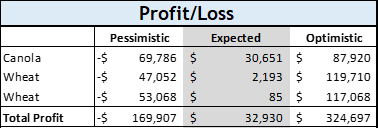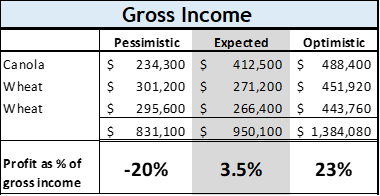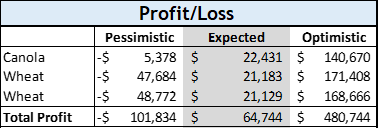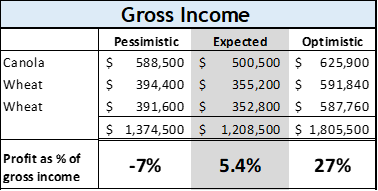ORM compared the overall farm profit over 15 years of a Canola-Wheat-Wheat rotation under two scenarios.
- Scenario 1: Glyphosate pre-sowing knockdown with trifluralin incorporated by sowing to provide residual ryegrass control.
- Scenario 2: A split application of glyphosate and paraquat as a ‘double knock’ before sowing, in-crop application of a new mode of action ryegrass herbicide, as well as harvest weed seed control from year 8 of the rotation onwards.
Weed Wizard software was used to model ryegrass seed banks over a 15-year period.
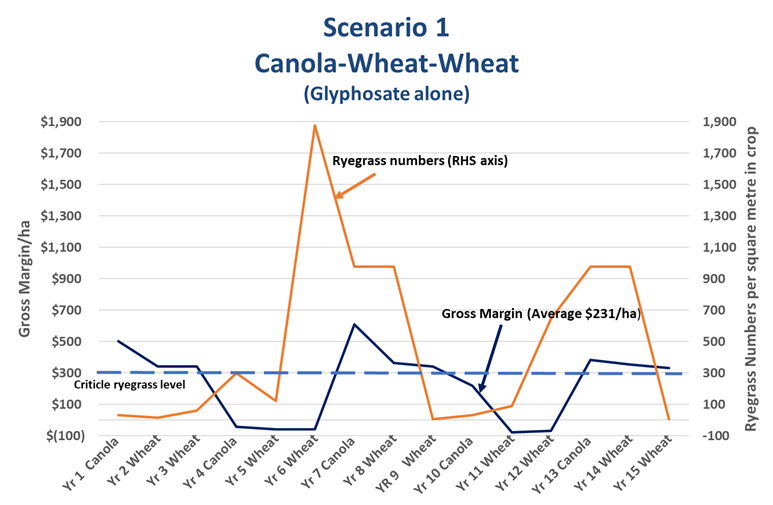
The Weed Wizard results show that ryegrass numbers are likely to increase dramatically in Scenario 1 and frequently rise above the critical ryegrass level which equates to a reduction in crop yield. Ryegrass numbers as low as 50 plant per square metre can reduce crop yields significantly and hence reduce business operating margins. Scenario 1 has a lower variable cost per hectare ($402/ha v’s $497/ha) as it utilises fewer chemical inputs however it also exhibits a lower gross margin ($231/ha v’s $309/ha) due to reduced yields caused by increased weed pressure.
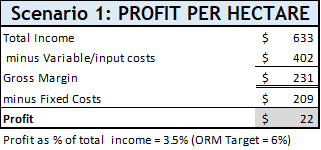
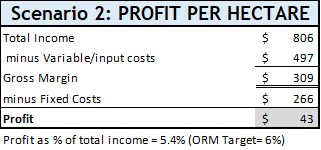
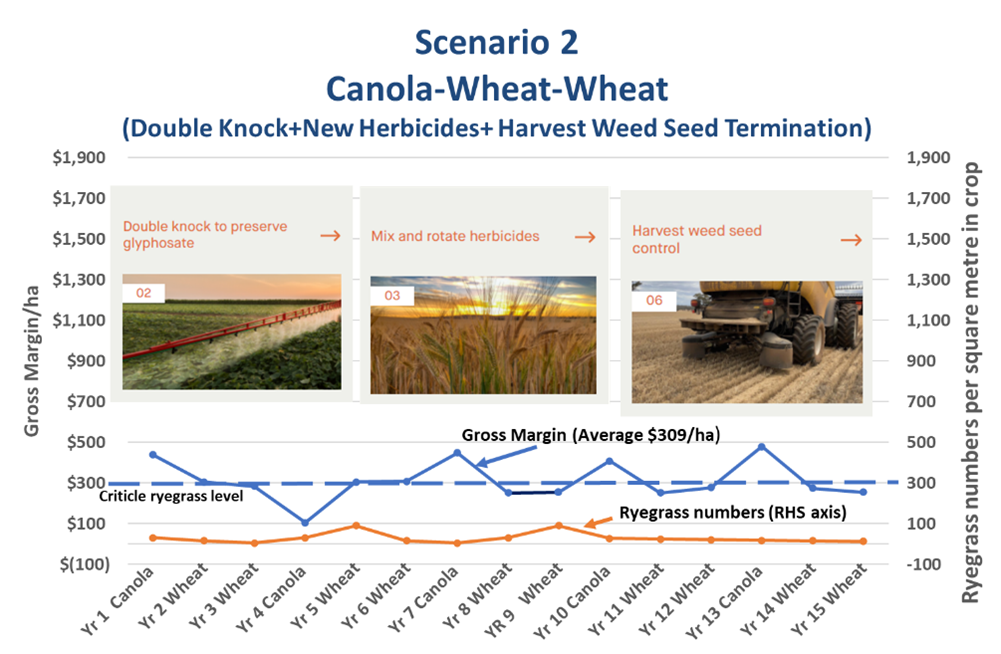
Overall effect on farm profits can be large.
The overall effect of different weed control scenarios on a model 1500ha farm over 15 years, is a dramatic fall in profit from $43/ha in Scenario 2 to $22/ha in Scenario 1. The model utilises ORM benchmark data for the fixed costs and contract rates were used for all operations. Average wheat and canola prices and yields were used to generate the above graphs (Wheat 3t/ha at $240/t. Canola 2t/ha at $550/t).
 |
Scenario analysis is a powerful tool, when modelling the coming seasonal outlook for yield and price is overlayed with agronomic data such as ryegrass seed numbers it can be a powerful predictor of potential effects on future farm profits. As can be seen below Scenario 1 returns an overall profit of $33,000 over the 1500-hectare farm versus $65,000 for Scenario 2. This is almost double the profit! Scenario 1 also has a lower profit in better (optimistic) rainfall years ($325,000 v’s $481,000) and a bigger downside risk in dry (pessimistic) years (-$170,000 v’s -$102,000).
|
Scenario 1 – 1500-hectare farm
|
More diversity in rotations and weed control techniques drive higher profits
|
Get in touch to find out more Contact Us
